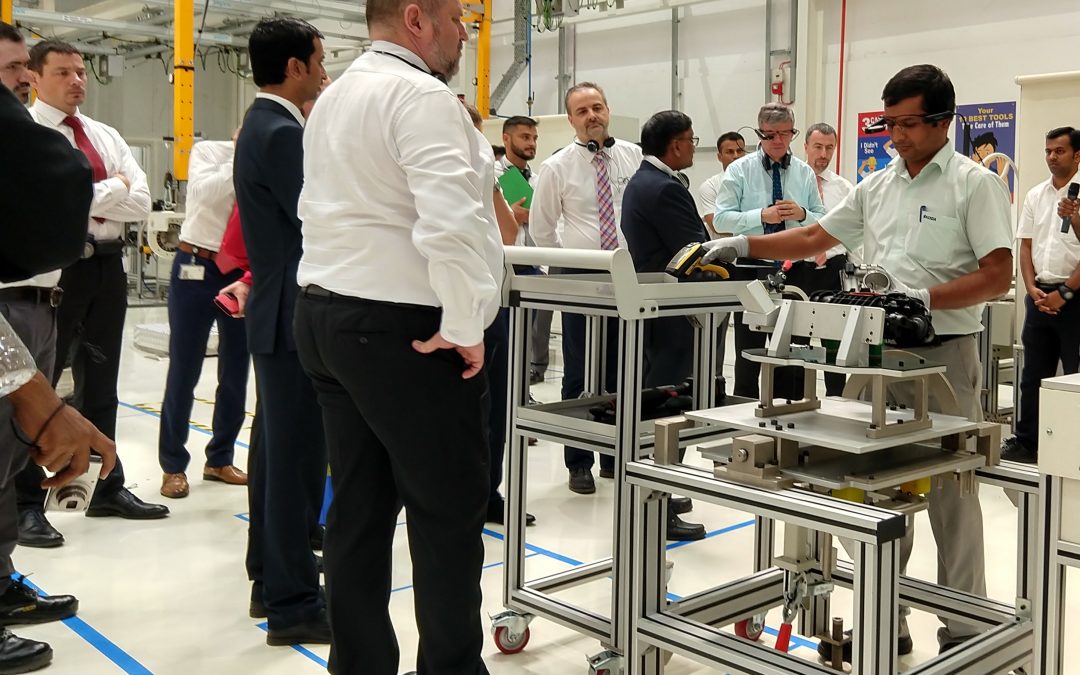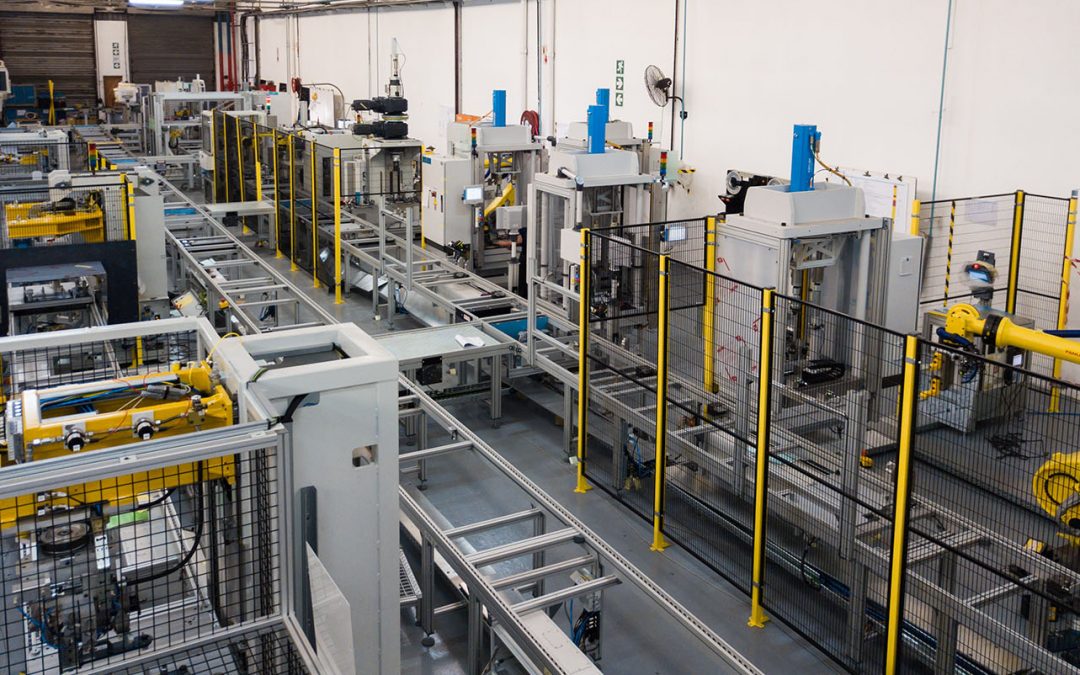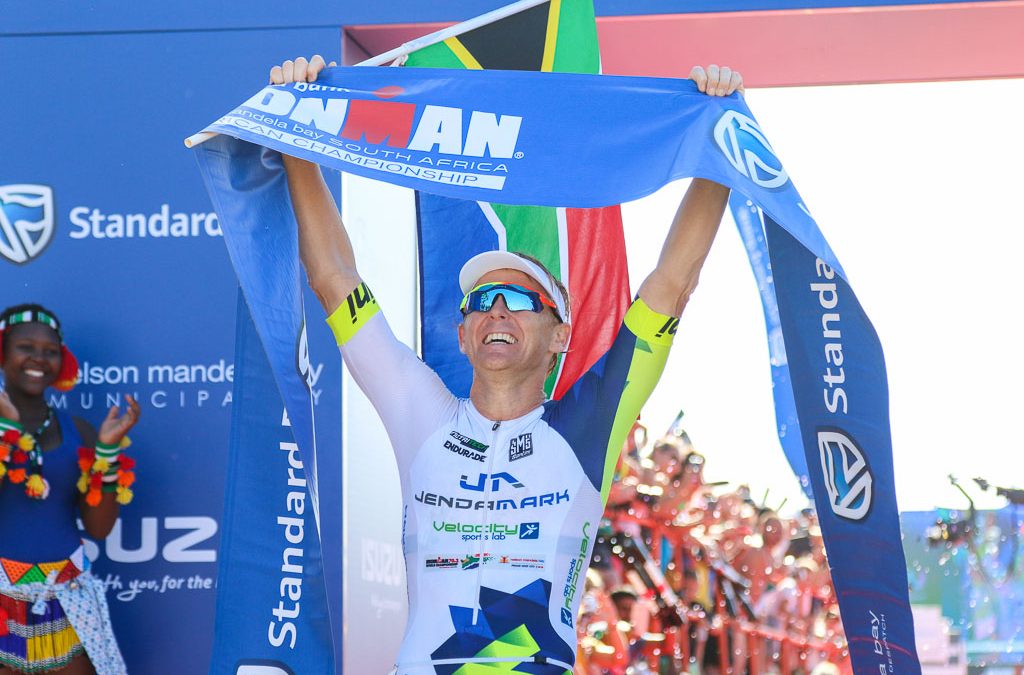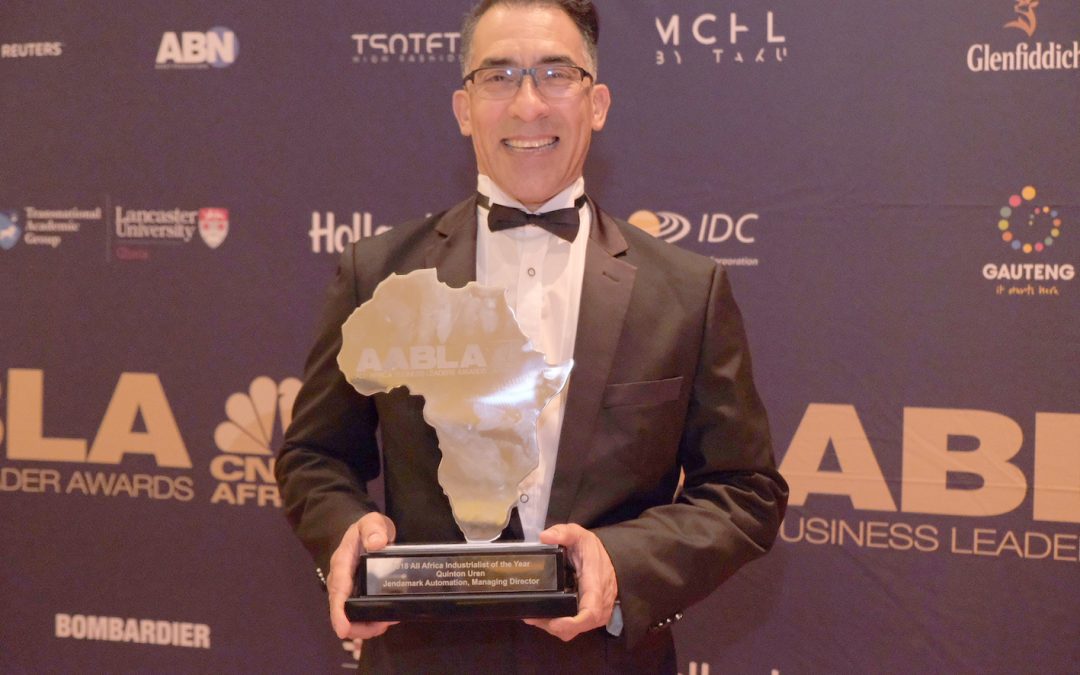
by Good News Lab | Dec 11, 2018 | Jendamark News
This year, Jendamark Techcellency (JMKT) delivered a first for India and its biggest order to date – an innovative engine assembly line that uses augmented reality to guide its operators.
In May, this line was installed in the Skoda plant in Aurangabad, where it is being used to assemble four-cylinder R4 and six-cylinder V6 engines. The €2.5 million production line, which took 10 months to complete, has successfully produced the pilot series of engines and is currently gearing up for a ramp up in volumes.
JMKT operations director Himanshu Jadhav says the Industry 4.0-driven project was not just a first for the JMKT
team but for the customer too.
“As a turnkey project, it was extremely complex and many of the aspects had never been done before. Our engineers spent a considerable amount of time understanding the requirements, coming up with innovative solutions and making it work.
“This line has several unique solutions – from a mechanical, electrical and IT point of view – which showcase our
capabilities as a leading tech-oriented company,” says Jadhav.
First among these is the use of augmented reality glasses in the production environment to guide the operator through the assembly process. There is also the extensive use of tools and gauges that transfer critical production data via a wireless network.
“All of these Industry 4.0 solutions are based on our Odin software platform,” says Jadhav.
“We also gave our customers a realistic feel for the line and a chance to suggest improvements – before a single part was manufactured – using THEIA, our virtual reality solution.”
The complete line entailed the design and manufacture of more than 300 items required for the assembly of the engine in the most cost-effective way, without compromising on quality.
Teams from South Africa, Germany and India were involved in every aspect of the project from design to execution.
“The whole global team put in long, hard hours but our passion to deliver and an uncompromising approach towards results saw us execute this project to the best of our abilities and ensure customer satisfaction.”

by Good News Lab | Dec 7, 2018 | Jendamark News
Jendamark continues to push the boundaries of possibility with its longest and most automated powertrain production line so far. This differential assembly line is also the largest single-order project ever to be completed by the Group.
Designed to assemble the GM-A2xx platform differentials for General Motors, the line has been installed for ZF at their Gainesville facility in Georgia in the United States.
Jendamark’s head of powertrain assembly, Johan Labuschagne, says the project turnaround time was 12 months, as the entire line had to be designed from scratch.
“No existing machine designs could work for this specific product, except our pinion nut tightening machine, which also had to be modified,” says Labuschagne, adding that it was the first full differential assembly line supplied by Jendamark in 15 years.
“Our R&D experts guided the design team and from there we relied on our vast experience with manufacturing, assembly and commissioning to bring this production line to life.”
It was also the first line to use the latest version of Jendamark’s production and line management software, Odin.
This was particularly important as the assembly process involves gauging to select the right parts for optimum performance of the differential unit, and testing – including a backlash measurement and leak testing – to verify that the assembly process was done correctly.
“Its value has been proven, and we have received an order for another production line using Odin from the same customer,” says Labuschagne.
“We faced some serious hurdles, but the team put in the necessary research and hours to get the project over the finish line. Everyone can feel proud that we delivered a good product and won the customer’s confidence for future projects.”
THE BIG NUMBERS:
Total floor area: 50m x 22m
Total conveyor length: 130m
Machine footprint: 46m
Design: Loop conveyor system
Working stations: 18
Operators: 8
Robots: 5 (plus 1 installed by customer)

by Good News Lab | Dec 7, 2018 | Jendamark News
Jendamark-sponsored Ironman African champion Kyle Buckingham shares the highs and lows of being a professional triathlete and what makes him take on these super-human feats of endurance.
Q:You and Jendamark share the same home town of Port Elizabeth. What makes the city such a great training ground for you?
A: There is a lot of variety on my bike rides; I can practise on the Ironman Africa race course or head outside the city to tackle some hills. There is also great running where I live in Sardinia Bay. Plus, there’s a handful of quality pools to choose from for my swim and, of course, the Indian Ocean.
Q: What drives you to push the limits of your physical endurance in not one but three disciplines?
A: I love the challenge. I didn’t get the opportunity to try out any other sport beside Ironman when I was younger. I came across it by accident and found I was pretty good at it after finishing my first race.
Q: What has Jendamark’s sponsorship enabled you to do in your career?
A: My sponsorship with Jendamark has allowed me to train full time as a professional triathlete and race not only in South Africa but abroad too.
Q: What does your average training day look like?
A: On a typical day, I will train for at least six to eight hours on all three disciplines. I start with my bike ride – anywhere between two and seven hours. Then I head to the pool at lunchtime and swim four to five kilometres. After lunch I will have an afternoon sleep to recover before finishing off my day with a 45 to 90-minute run in the evening.
Q: How do you fuel your training? What does your daily diet look like?
A: I have pretty normal meals, consisting mainly of good proteins, high fats and lower carbs. When I train, I use energy drinks to help with electrolyte replacement and calories. I burn between 3 000 and 6 000 calories per day. I also take a recovery shake to add a larger number of calories into my diet than food can.
Q: How many pairs of running shoes do you wear out in a year?
A: I go through roughly five pairs of running shoes for training and I use a brand-new pair of racing shoes for every race. So that’s about another four or five pairs of racers.
Q: When you’re struggling on the run/swim/cycle, how do you motivate yourself? What do you think about during those long hours?
A: I think about winning my next event – it is always on my mind. When racing, I think about those long hard days in training that I do. I also think to myself that, when my race career is over, I want to look back and say that I gave my best effort – and not that I should have trained harder!
Q: Was winning the Ironman Africa Championship in your hometown the high point of your career so far?
A: Absolutely, YES!
Q: What’s your favourite memory from the day?
A: My favourite memory is running past my family on Marine Drive. They were all screaming for me and telling me I look amazing, and I just kept thinking, “I feel incredible. I feel like I am walking on water.”
Q: What are some other career highlights?
A: I will never forget the feeling of winning my first-ever Ironman at Ironman Lake Placid in 2014 in my first year as a pro. Another highlight was taking the overall course record at Ironman World Championships in Kona as an age-grouper in 2013 – and still holding that record today.
Q: What has been one of your serious lowlights? And how did you move past it?
A: In October 2017, I had a very upsetting race at the Ironman World Championships in Hawaii. I was in the absolute best shape and form of my life. Predictions and numbers were showing that I should be in a great position to finish top 10 overall. Then my race didn’t go as planned. I had a mechanical on the bike and was the last male pro to finish that leg. Looking back, I might have also picked up a virus that I didn’t know I had. On the morning of the race I could not stop sweating, which, looking back, should have been a red flag for me. The night after the race I was extremely ill and almost couldn’t catch my return flight home. I was sick for an entire month and slept day and night for the first five days. To get over the disappointment, I had to remind myself why I chose this sport and of the love I have for it. I also had to remind myself that I have a lot of people who support me and surround me with so much positivity. This encouraged me to get my fight back and start my training again.
Q: What are your plans and major goals for 2019?
A: My number one goal is to defend my title at Ironman African Champs in April and also to improve my position at the Ironman World Champs in Hawaii.

by Good News Lab | Dec 5, 2018 | Jendamark News
Jendamark Automation managing director Quinton Uren was named Africa’s Industrialist of the Year at the grand finale of the All Africa Business Leaders Awards, hosted by CNBC Africa at the Sandton Convention Centre in Johannesburg on November 29.
Uren, whose Port Elizabeth-based automation company exports manufacturing assembly solutions to 18 countries worldwide, beat out business leaders from Southern, West and East Africa for the overall title at the eighth annual continental awards.
These included fellow South African finalists Nampak CEO Andre de Ruyter, Likoebe Innovation Consultants founder Nneile Nkholise, and Nana Sebelo, CEO of Thata uBeke Manufacturing.
Speaking after the ceremony, Uren said the award was a “massive recognition for what Jendamark as a South African company, has achieved in the export market”.
Since co-founding the small automotive engineering firm in 1992, Uren and his fellow directors have grown the company into a global automation leader with local offices in PE, East London and Pretoria, and an international presence in Pune in India, Penzing in Germany, and Detroit in the USA. Today, exports account for more than 90% of the group’s business.
“The dedication and hard work of our home-grown talented team creates success. We operate in a very competitive manufacturing sector, and we succeed globally,” added Uren.
He attributed this success to balancing sound engineering solutions, driven by the latest Industry 4.0 technologies, with good financial direction.
While the economic outlook remained “tough”, Uren said having a global market strategy is continuing to prove to be best.
“We need to believe in ourselves and our local talent and apply ourselves to the available global markets.”
He said investing in Industry 4.0 was the competitive edge that would help attract investment and transform South African businesses and the continent, enabling on-the-job upskilling and job creation through skills development using virtual reality and augmented reality technology, among other high-tech tools.
“Industry 4.0 and how it pertains to the South African environment is the next big thing for us. It’s not about automation but about developing software technologies that can help our various industries and country become more efficient, effective, and transformed. Together, we can change the landscape, but we have to move quickly or that landscape will become barren.”
On a personal level, Uren, 53, said his award showed that anyone could make it.
“As someone who was classified as ‘coloured’, I come from an underprivileged background. There were no silver spoons, just having the correct intent, hard work and taking advantage of the opportunities I got.
“Today, there are fewer barriers than before and with the technologies that are available to most, young people have amazing tools to succeed. I have hope and proof that it’s possible.”



